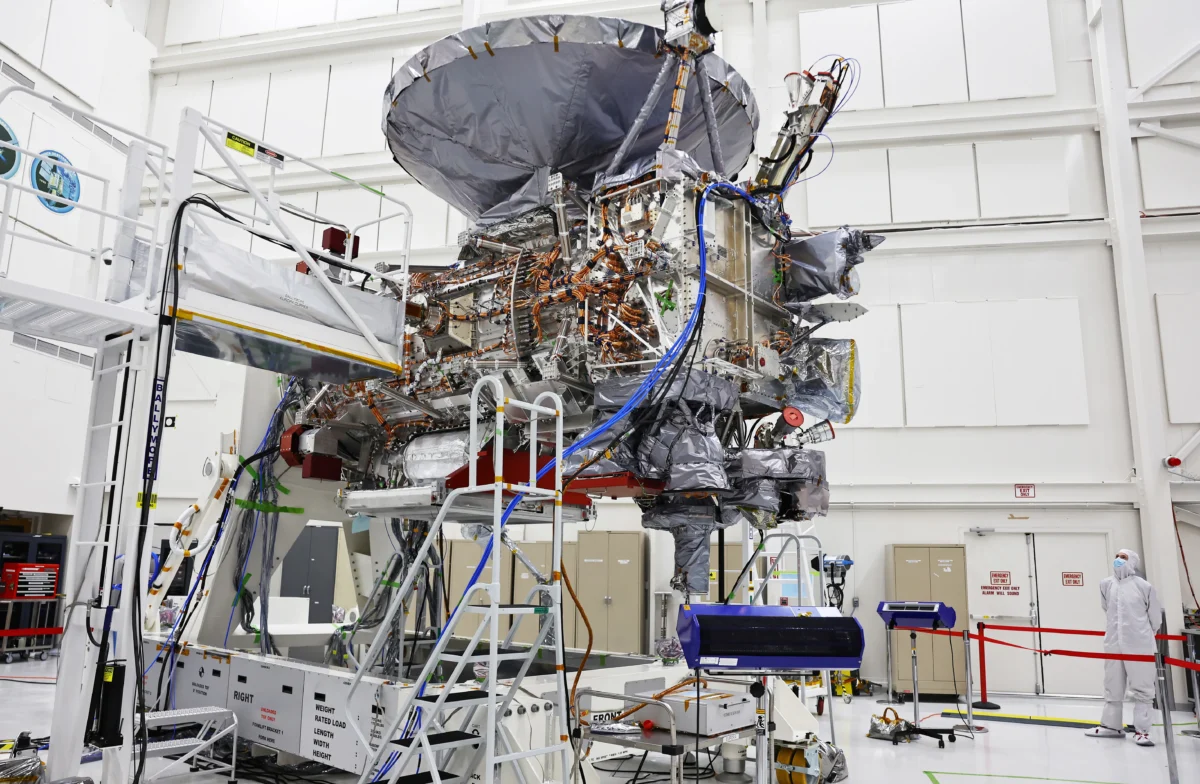With SpaceX over the weekend taking another giant step toward CEO Elon Musk’s dream of colonizing Mars, the company on Monday launched a NASA space probe on a quest to find organic life on Jupiter’s moon Europa.
After a couple of days’ delay due to Hurricane Milton, a Falcon Heavy Rocket launched NASA’s Europa Clipper from Kennedy Space Center in Florida shortly after noon local time.
It won’t be until another 5 1/2 years that NASA’s Europa Clipper reaches our solar system’s biggest planet, 1.8 billion miles from here, where it will slip into orbit to observe Europa during dozens of radiation-drenched flybys.
According to NASA, the ingredients for life may exist on Europa right now. Data from previous NASA missions has indicated that an enormous salty ocean lies underneath the moon’s frozen surface.
During its mission, Clipper will circle Jupiter every 21 days, making a total of 49 flybys of Europa.
“Ocean worlds like Europa are not only unique because they might be habitable, but they might be habitable today,” NASA’s Gina DiBraccio said on the eve of the launch.
The spacecraft’s nine instruments will determine the thickness of Europa’s icy crust and the nature of the ocean beneath it and investigate the moon’s composition and geology. During its closest flyby, Clipper will approach Europa as close as within 16 miles—much closer than the few previous visitors.
Onboard radar will attempt to penetrate the moon’s ice sheet, believed to be 10 miles to 15 miles or more thick. The ocean below could be 80 miles or more deep and may contain more than twice as much liquid water as all of Earth’s oceans combined.
On each flyby, Clipper will pass over a different area of the moon so as to scan nearly the entire satellite.
According to NASA, the mission will “help scientists better understand the astrobiological potential for habitable worlds beyond our planet.”

At 13,000 pounds, the Europa Clipper is the largest spacecraft that NASA has ever built for a planetary mission. Nearly half of its weight is propellant for the spacecraft’s 24 engines that are to take it to Jupiter. With its solar arrays, or “wings,” deployed, Clipper spans more than 100 feet.
The $5.2 billion mission almost got derailed when NASA found out in the spring that Jupiter’s radiation field was more damaging than previously understood and capable of frying the spacecraft’s transistors.
The space agency spent months reviewing everything before concluding in September that the mission could proceed as planned.
To overcome the radiation hurdle, Clipper’s electronics were enclosed in a vault with walls made of 9.2-millimeter-thick sheets of aluminum-zinc alloy. Extra shielding is provided by an additional vault plate of one-millimeter-thick tantalum metal. The vault plate is engraved with poetry, artwork, and other messages linking Europa’s ocean world to our own.
Europa, Jupiter’s fourth-biggest moon, was first discovered in 1610 by Galileo Galilei.
The Associated Press contributed to this report.
